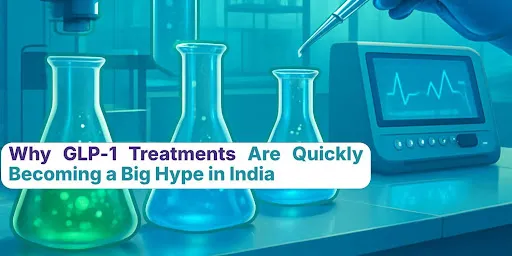What is PICC line?
A Peripherally Inserted Central Catheter line is known as PICC line. It is a flexible plastic tube that can be attached to a syringe or a drip that contains your medication. This line is used to give treatments like chemotherapy, antibiotics, blood transfusion, liquid fluid, and IV (intravenous) fluids.
It can also be used for different treatments at once by dividing it into 2 - 3 lines. The patient can even go home with it and it can be left in for several months. This line is inserted by a doctor or a specialized nurse.
What are different types of PICC lines?
There are two types of PICC lines:
Groshong - The Groshong PICC line self seals itself and does not require a clamp. It has a slit in the side at the internal end, which opens only when blood is being drawn or when fluid is being inserted.
Open-Ended - The Open-Ended PICC line does not have a slit in the end and always stays open. It needs to be closed by a clamp when not in use, so that the blood does not flow back into the line.
What are the benefits of getting the PICC line inserted?
There are a lot of benefits of getting a PICC line inserted:
- Versatility: These lines are very versatile and can be used to administer anti-cancer drugs, antibiotics, intravenous fluids, blood, and nutrients. They can be kept in the body for a long time and are essential for treating cancer patients, as well as patients who need medications for a long time.
- Low risk of infection: There is a very low risk of infection, as the insertion of the line is done through sterile techniques. The area is also covered with a dressing keeping it clean and dry, which reduces the risk of infection.
- Early discharge: The patient can be discharged early, as he/she can go home with the line inserted.
- Decreased skin puncture: These lines can be used to draw blood samples for various diseases, thus the patient does not need to take injections for everything. This relieves them of the repeated pain, puncture marks, and risk of infection.
What are the risks of getting it inserted?
Along with all the benefits, there are a lot of risks related to the line:
Infection: There is a possibility of an infection developing in the tube or in the area around the line. The patient should contact the hospital or a doctor if -- There is redness, pain and swelling in the area.
- He/she experiences muscle aches, fatigue, weakness, chills, or fever.
- Discoloured fluid is discharged from the site.
- Blood pressure decreases.
- The white blood cells count goes up.
- Line may come out: The line may come out by accident if the dressing is not secure. In this case it needs to be replaced immediately.
- Line may break: There is a chance of the line getting cut or splitting, though it is not very common. In this case, the patient needs to contact the hospital immediately and get it removed.
- Phlebitis: Inflation in the vein where the line is inserted.
- Nerve Injury: At the time of inserting the line, the nearby nerves might get injured.
- Leakage: Leakage can happen at the sight of insertion due to rupture or migration of the line.
What is the cost of PICC line?
The cost of PICC line in India ranges from Rs. 1400 to Rs. 4200 (according to the figures of 2008).
Can I move my arm after getting PICC line inserted?
The patient should move his/her arm as normally as possible after getting the line inserted. If there is a slight pain, then a warm compress can be applied to the area. The patient should take certain precautions while they have the line inserted in their arm.
- The patient should not swing the arm vigorously.
- Extra care should be taken while changing clothes.
- Swimming or any other water activity is prohibited.
- Strenuous activities that lead to perspiration should be avoided.
- Refrain from lifting heavy objects.
How is it inserted?
After the cleaning the area with an antiseptic solution, local anaesthesia is given to the patient. When the area becomes numb, a needle is inserted in the vein through which the PICC line is threaded. This line is a soft, long, and flexible plastic tube, which is inserted in a large vein in the arm near the elbow like the basilic vein, cephalic vein, or brachial vein.
It is then guided up the vein towards the heart, till the line reaches the cavoatrial junction or distal superior vena cava. It is then held in place with the help of a transparent dressing. A chest X-Ray is done to see if the end of the line is correctly positioned.
How is it removed?
Removal of the catheter is easy and painless. Usually a trained nurse pulls it out gently, and it just takes a few minutes. This process can even be done at the patient's home. Sometimes, there is a possibility of resistance due to a venous spasm (sudden contraction of a vessel wall).
When this happens, it takes more time to remove it. The line should never be pulled out forcefully, as there is a chance of it breaking. After it is removed, the area is bandaged with a sterile gauge. The wound is to be kept dry for a few days so that it can heal.
How should I take care of it?
When the patient is in the hospital,the nurses take care of the PICC line. They check for leakage, inspect the dressing, and flush the catheter. But when the patient is not in hospital, either a nurse has to do the checking or the patient's relatives and family members can be taught how to take care of it. They can take care of the line in the following manner:
It has to be flushed at least two times a day, after every 12 hours, when it is being used. This is done by flushing 0.9% saline with a syringe to prevent the line from clotting.
When the line is not in use, it can be flushed once a week to prevent it from getting blocked.
The dressing keeps the site clean and holds the line in place, so it should be changed every week. If the dressing becomes loose, then it needs to be changed immediately. A clean dressing prevents infection.
The bungs or caps also need to be changed every week along with the dressing and the clamp should be closed when the line is not in use.
Scissors are not supposed to be used, as there is a risk of the line getting cut.
The line should be kept dry while taking a bath. The dressing can be covered in waterproof covers or plastic bags to prevent from getting wet.
Avoid checking blood pressure in the arm having the line.
What all precautions should I take?
The precautions to be taken are:
- The dressing or the line should not be pulled.
- Avoid touching the PICC area.
- The patient should not swing the arm with the line vigorously, and extra care should be taken while wearing or removing clothes.
- Hand should be properly washed before taking care of the area.
- The PICC area should be properly covered at all times, even while sleeping.
- The dressing should always be kept dry and clean, and all the edges of the dressing should be completely sealed.
- If the line does not get flushed easily, do not force it and immediately contact your doctor.
- Keep scissors and other sharp objects away from the PICC line so that it does not get cut.
- Use sterile equipment, and clean the cap before and after every use.
After how long I should get it removed?
The line can be kept in the arm for weeks or months. The patient can get it removed when it is no longer required. You should also discontinue it after consulting your doctor, when an infection occurs or the line gets blocked or damaged.

Reviewed by







